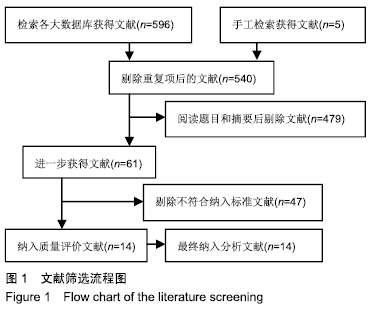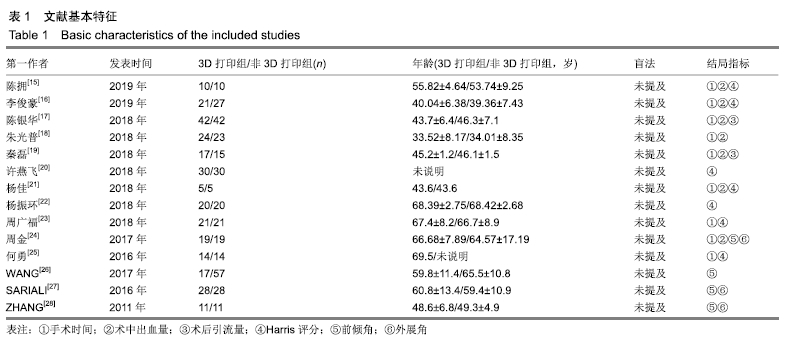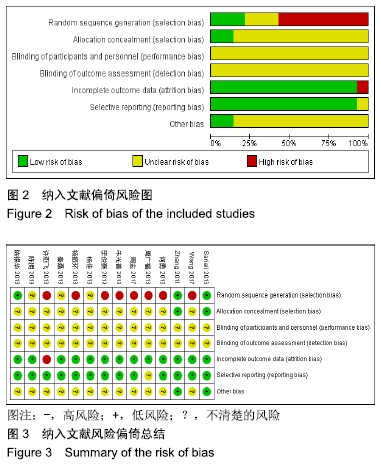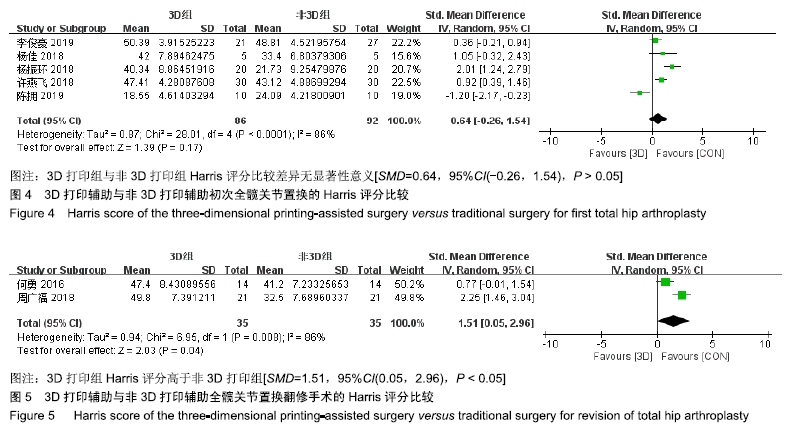[1] FERGUSON RJ, PALMER AJ, TAYLOR A, et al. Hip replacement. Lancet.2018;392(10158):1662-1671.
[2] 郑志博,冯宾,董玉雷,等.全髋关节置换术后脱位因素分析及防治策略[J].中华骨与关节外科杂志,2016,9(3):198-203.
[3] UGBEYE ME, LAWAL WO, AYODABO OJ, et al. An Evaluation of Intra- and Post-operative Blood Loss in Total Hip Arthroplasty at the National Orthopaedic Hospital, Lagos.Niger J Surg.2017;23(1):42-46.
[4] MACDONALD E, WICKER R. Multiprocess 3D printing for increasing component functionality.Science. 2016;353(6307):aaf2093.
[5] 马晨光,纪颖,薛迪.3D打印技术骨科临床应用效应系统性综述[J].中国医院管理,2017,37(5):35-38.
[6] 鲍立杰,张志平,吴培斌.3D打印技术在骨科的研究及应用进展[J].中国矫形外科杂志,2015,23(4):325-327.
[7] 卢鹏,田文.3D打印技术在骨科及手外科领域的应用研究进展[J].中国骨与关节杂志,2017,6(5):348-351.
[8] LIAW CY, GUVENDIREN M. Current and emerging applications of 3D printing in medicine.Biofabrication. 2017;9(2):024102.
[9] LUO Q, LAU T, FANG C, et al. Application of three-dimensional printing technique in orthopaedics. Chin J Reparative Reconstructive Surg. 2014;28(3):268.
[10] VAISH A, VAISH R. 3D printing and its applications in Orthopedics.J Clin Orthop Trauma. 2018;9(Suppl 1):S74-S75.
[11] BAGARIA V,BHANSALI R,PAWAR P.3D printing- creating a blueprint for the future of orthopedics: Current concept review and the road ahead!J Clin Orthop Trauma.2018;9(3):207-212.
[12] GANGULI A, PAGAN-DIAZ GJ, GRANT L, et al. 3D printing for preoperative planning and surgical training: a review.Biomed Microdevices. 2018;20(3):65.
[13] FANG C, CAI H, KUONG E, et al. Surgical applications of three-dimensional printing in the pelvis and acetabulum: from models and tools to implants. Chirurgische Anwendungen des 3 dimensionalen Drucks an Becken und Acetabulum: von Modellen und Instrumenten zu Implantaten.Unfallchirurg. 2019;122(4):278-285.
[14] 黄幼怡,袁伟.3D打印技术与髋关节疾病的治疗[J].中国组织工程研究, 2019,23(34):5538-5543.
[15] 陈拥,张斌.3D打印技术辅助全髋关节置换治疗成人发育性髋关节发育不良[J].中国组织工程研究,2019,23(36):5772-5776.
[16] 李俊豪,张帅,黄其志,等.应用数字化设计结合3D打印技术人工全髋关节置换手术治疗先天性髋关节发育不良的临床研究[J].中国医学创新,2019, 16(8):1-5.
[17] 陈银华,孙天祥,钟易林.3D打印技术制造骨盆模型对DDH患者进行人工髋关节置换术的研究[J].山西医科大学学报,2018,49(2):178-181.
[18] 朱光普.3D打印在全髋关节置换术治疗成人发育性髋关节发育不良患者中的应用[J].医药论坛杂志,2018,39(3):49-51,54.
[19] 秦磊,李洪彪,韩修福,等.3D打印技术在成人先天性髋关节发育不良Crowe Ⅳ型人工全髋关节置换术应用分析[J].世界最新医学信息文摘, 2018,18(67):68,71.
[20] 许燕飞,郭英,艾元亮, 等.3D打印辅助术前设计指导成人髋发育不良全髋置换术与传统术前设计近期疗效分析比较[J].医药前沿,2018,8(16): 156-157.
[21] 杨佳,杨毅,赵云宏,等.应用3D打印技术联合组配式S-ROM假体人工髋关节置换术治疗成人Crowe Ⅳ DDH[J].昆明医科大学学报,2018,39(5): 83-89.
[22] 杨振环,王晖,葛志强,等.骨小梁3D打印在人工髋关节的应用[J].川北医学院学报,2018,33(1):4-6,10.
[23] 周广福,朱伟民,唐本森,等.3D打印技术在髋关节置换术后感染Ⅱ期翻修手术中应用[J].重庆医学,2018,47(13):1746-1748.
[24] 周金,刘炯,杨砥,等.3D打印技术辅助成人DDH初次THA的髋臼置入[J].中国矫形外科杂志,2017,25(23):2182-2186.
[25] 何勇,刘欣伟,张敬东,等.3D打印技术在髋关节置换术后感染Ⅱ期翻修手术中应用[J].临床军医杂志, 2016,44(10):999-1002,1005.
[26] WANG S, WANG L, LIU Y, et al. 3D printing technology used in severe hip deformity.Exp Ther Med. 2017;14(3):2595-2599.
[27] SARIALI E, BOUKHELIFA N, CATONNE Y, et al. Comparison of Three-Dimensional Planning-Assisted and Conventional Acetabular Cup Positioning in Total Hip Arthroplasty: A Randomized Controlled Trial.J Bone Joint Surg Am. 2016;98(2):108-116.
[28] ZHANG YZ, CHEN B, LU S, et al. Preliminary application of computer-assisted patient-specific acetabular navigational template for total hip arthroplasty in adult single development dysplasia of the hip. Int J Med Robot.2011;7:469-474.
[29] HUGHES AJ, DEBUITLEIR C, SODEN P, et al. 3D Printing Aids Acetabular Reconstruction in Complex Revision Hip Arthroplasty.Adv Orthop.2017;2017:8925050.
[30] TACK P, VICTOR J, GEMMEL P, et al. 3D-printing techniques in a medical setting: a systematic literature review.Biomed Eng Online. 2016;15(1):115.
[31] BAGARIA V, CHAUDHARY K. A paradigm shift in surgical planning and simulation using 3Dgraphy: Experience of first 50 surgeries done using 3D-printed biomodels.Injury.2017;48(11):2501-2508.
[32] WANG Q, GOSWAMI K, SHOHAT N, et al. Longer Operative Time Results in a Higher Rate of Subsequent Periprosthetic Joint Infection in Patients Undergoing Primary Joint Arthroplasty.J Arthroplasty.2019; 34(5):947-953.
[33] HARRIS WH. Traumatic arthritis of the hip after dislocation and acetabular fractures: treatment by mold arthroplasty. An end-result study using a new method of result evaluation.J Bone Joint Surg Am. 1969;51(4):737-755.
[34] SHOJI T, YASUNAGA Y, YAMASAKI T, et al. Low femoral antetorsion and total hip arthroplasty: a risk factor.Int Orthop.2015;39(1):7-12.
[35] HISATOME T, DOI H. Theoretically optimum position of the prosthesis in total hip arthroplasty to fulfill the severe range of motion criteria due to neck impingement.J Orthop Sci.2011;16(2):229-237.
[36] 张江涛,尚延春,吴富源,等.髋关节假体置换中股骨头直径及髋臼前倾角的作用[J].中国组织工程研究,2013,17(30):5427-5433.
[37] D'LIMA DD, URQUHART AG, BUEHLER KO,et al. The effect of the orientation of the acetabular and femoral components on the range of motion of the hip at different head-neck ratios.J Bone Joint Surg Am. 2000;82(3):315-321.
[38] BARSOUM WK, PATTERSON RW, HIGUERA C, et al.A computer model of the position of the combined component in the prevention of impingement in total hip replacement.J Bone Joint Surg Br.2007; 89(6):839-845.
[39] 刘奎玉,赵建宁,钱红波,等.髋臼杯的安放角度对假体稳定性的影响[J].解剖与临床,2013,18(6):524-526.
[40] WIDMER KH, ZURFLUH B. Compliant positioning of total hip components for optimal range of motion.J Orthop Res.2004;22(4): 815-821.
|











